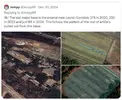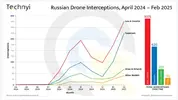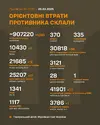An update on the war following a recent trip.
The situation has improved compared with Fall 2024. Russian offensive momentum slowed significantly over the winter, though it is premature to claim that the front has stabilized, especially following AFU withdrawal in Kursk.
Russian advances were stalled for three reasons: materiel exhaustion from losses in the fall, effective Ukrainian adaptation to how Russian forces were prosecuting offensive operations, and winter weather conditions which affected the pace of operations.
This dynamic may not hold as we get further into the spring. Russian forces appear to be regrouping for renewed offensive operations. Ukrainian forces have improved tactically at countering how RF fight, employing UAS to compensate for a deficit of manpower at the front.
AFU is successfully attriting Russian forces at 0-30km through a combination of mining, drones, and traditional fires. This enables a low density of forces to hold the front. Russian units often don’t reach defensive positions and much of the equipment is lost in assaults.
Ukraine invested in this approach last year by significantly expanding drone units such as Birds of Madyar, Lasar Group, Achilles, etc. It also invested in scaling up mine and drone production. Drone formations are the primary stabilizing factor along the front right now.
Drones are responsible for over ~60% of the daily RF casualties at this point, and are the principal means of stopping attacks in combination with mining, and traditional artillery. Better integration has led to a more systemic approach at the tactical level.
Drones continue to expand their role as counters to other types of drones. There is a growing role for UGVs in logistical roles, and as part of breaching operations. Actual automation is slowly coming along with terminal guidance, uncrewed turrets, etc.
Ukraine is now making much of what it needs for day-to-day combat needs, from mines to drones. But, it remains dependent on the West for long precision strike (GMLRS), interceptors for air defense systems, parts/maintenance, and other non-materiel forms of support.
Ukraine received significant amounts of arty ammunition and equipment over the winter, and increased its own production of drones. Across much of the front there is relative parity in artillery fires and strike drones with some asymmetries in specific categories of systems.
The recent appointments of a new commanders, especially Drapatyi taking over both Land Forces and OSUV Khortytsia, has had positive effect on the morale of subordinate units. In May 2024 Drapatyi took over defense of Kharkiv on the second day, stabilizing the situation.
Training reform is finally being tackled, and there are prospects for change under the new Land Forces commander, improving the quality of training, facilities, updating the content, replacing instructors, and tying training to actual combat needs.
A structural deficit of manpower continues to be Ukraine’s leading problem. Mobilization remains insufficient to address these challenges & the sizable absent without leave (AWOL) problem. The amnesty law has led some to return to units, but AWOLs continue to sap the force.
Ukraine has thankfully suspended creating new brigades, reversing what was one of the more puzzling force management choices in 2024. And there is progress being made to stand up new Corps formations, which are closer to divisions, based on the AFU’s best brigades.
In recent months Russian forces have not advanced significantly near Pokrovsk, Chasiv Yar, Kupyansk. Much of the Russian progress has been around Velyka Novosilka, Kurakhove, and Kursk. However, in Kursk AFU has been forced to withdraw from most of the territory held.
Recent Russian advances in Kursk were taking place well before the suspension of US military assistance/intelligence. The battlefield geometry of a salient was inherently unfavorable. Russian forces chipped away at Kursk until they could interdict the few resupply routes.
DPRK assaults pressured Ukrainian lines, but the core problem was logistics as Russian fiber-optic FPV drones increasingly interdicted resupply routes. That said, AFU withdrew without major personnel losses, and the retrograde looked somewhat better than Avdiivka.
Unfortunately, there will be significant equipment losses due to the withdrawal, and the vehicle loss ratio is going to at best be 1:1 over the course of the operation. But there was no mass encirclement at Kursk. I know most folks understand this, but it merits repeating.
Given the character of the fighting, territory changing hands is a lagging indicator for what’s happening between the two forces. Consequently, ‘gradually then suddenly’ transitions are going to be common when a set of positions become unsustainable.
In my view holding Kursk wasn’t doing much for Ukraine at this point. Trading it for something seemed an unlikely proposition. The offensive did not lead to a change in the overall dynamic in the war, or a large shift of RF forces from Pokrovsk/Kurakhove axes.
I retain an overall mixed view of the Kursk offensive, and think it would have been best as a 1-2 week raid. That said, it also could have also gone a lot worse than it did. It was gamble that yielded initial tactical success, but ultimately didn’t pay off in my view.
Russian forces continue to suffer from low force quality, but also a general inability to overcome prepared defenses, backed by mass precision. The scale of attack, whether infantry, lightly motorized, or mechanized is typically insufficient to break through AFU positions.
Over the course of 2023-2024 Russian forces had adapted emphasizing assault groups and detachments, essentially ‘majoring in the minors.’ These tactics yielded incremental gains, grinding through the front, but do not lead to operationally significant breakthroughs.
For more on Russian military adaptation, assault groups, and why Russian forces ended up fighting the way they have been, you can check out this much longer report from 2024:
 Assessing Russian Military Adaptation in 2023Russian forces proved more flexible and effective in the conduct of defensive operations in 2023. Yet the Russian military remained committed to defending forward and aggressively counterattacking in …https://carnegieendowment.org/research/2024/10/assessing-russian-military-adaptation-in-2023?lang=en
Assessing Russian Military Adaptation in 2023Russian forces proved more flexible and effective in the conduct of defensive operations in 2023. Yet the Russian military remained committed to defending forward and aggressively counterattacking in …https://carnegieendowment.org/research/2024/10/assessing-russian-military-adaptation-in-2023?lang=en
RF has been dealing with a degree of materiel exhaustion after high loss rates in the fall, but current RF contract rates continue to provide replacements and enable rotations. RF recruitment went up considerably in the second half of 2024.
The bottom line is that despite the observed accelerated gains in the fall, the Russian military is visibly underperforming relative to its materiel advantages, and those gains were made at very high cost.
Though it is too early to assess if Ukraine is on track to stabilize the front, or if this is an intervening period, and Russian offensive intensity will resume later this spring, and into the summer.
The front line is not about to collapse. Despite AFU being largely pressed out of Kursk, the overall situation from Pokrovsk to Kupyansk improved. The implication being that Ukraine is not in a desperate situation requiring a rushed ceasefire under unfavorable terms.
Ukraine still has a chance to stabilize the front, if positive trends are sustained, manpower and force management issues addressed. UA and the West have to plan around the prospect that no ceasefire is imminent, or that in any case it will not lead to a durable peace.
For a previous thread on this subject from January see:
x.com/KofmanMichael/…
on implications of US assistance cutoff a few weeks ago which has been turned back on:
x.com/KofmanMichael/…

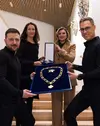

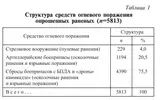
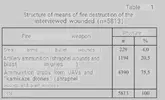
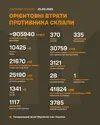

 Onnistunut tulitus – 1. rynnäkköpataljoonan ja 3. prikaatin joukot iskivät tarkasti vihollisen jalkaväkisiltoihin Tšornyi Zherebets -joen yli.
Onnistunut tulitus – 1. rynnäkköpataljoonan ja 3. prikaatin joukot iskivät tarkasti vihollisen jalkaväkisiltoihin Tšornyi Zherebets -joen yli. Tulos – sillat ovat nyt läpipääsemättömiä kalustolle ja vaikeasti saavutettavia vihollisen henkilöstölle.
Tulos – sillat ovat nyt läpipääsemättömiä kalustolle ja vaikeasti saavutettavia vihollisen henkilöstölle. Ukrainan taistelijoiden sankaruuden ja ammattitaidon ansiosta vihollisen suunnitelmat Borovan valtaamisesta ja etenemisestä Oskiljoen vasemmalle rannalle murenevat.
Ukrainan taistelijoiden sankaruuden ja ammattitaidon ansiosta vihollisen suunnitelmat Borovan valtaamisesta ja etenemisestä Oskiljoen vasemmalle rannalle murenevat.

